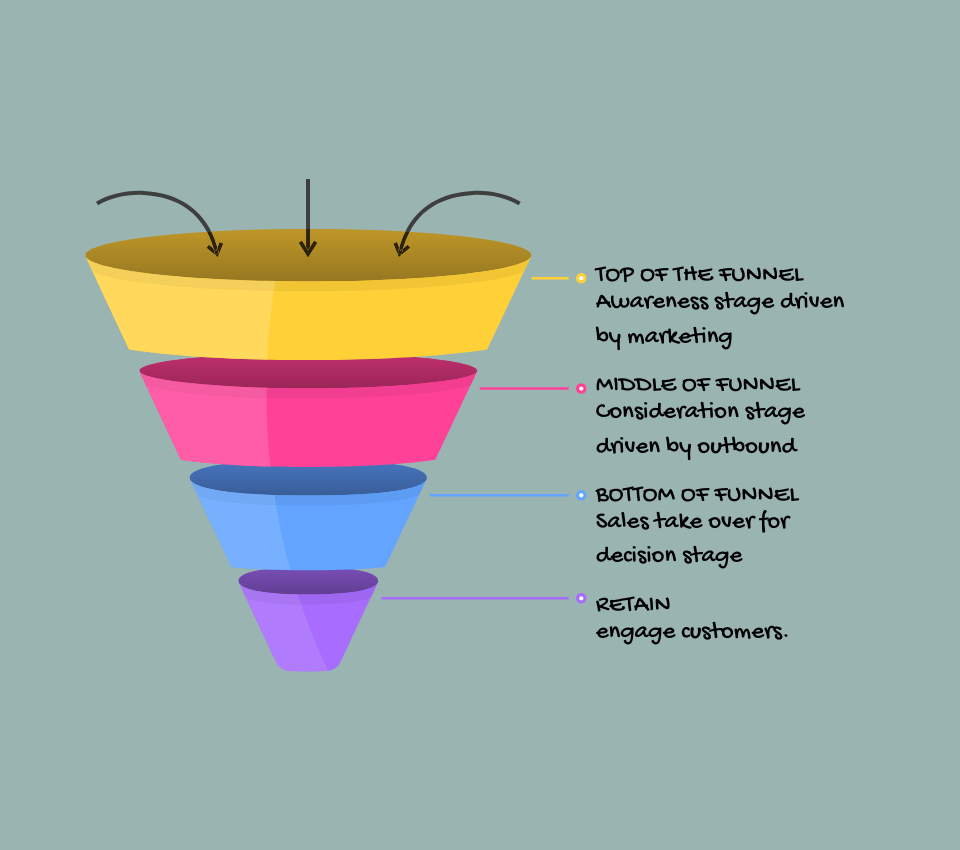
Think of content pillars as your GPS. They don’t just tell you where to go; they make sure you’re on the fastest and most strategic route to your destination
Think of content pillars as your GPS. They don’t just tell you where to go; they make sure you’re on the fastest, most strategic route to your destination: B2B success.
Content pillars are the strategic backbone of successful B2B marketing, helping brands create consistent, purposeful content that supports the buyer’s journey. They are the supporting beams of your content strategy. Each pillar represents a key area where your business demonstrates thought leadership, solves customer problems, and builds trust with your audience. Typically, B2B companies establish 3-5 content pillars that align with their business objectives and customer needs.
Consider HubSpot's approach: their content pillars revolve around marketing, sales, customer service, and website development. Every blog post, video, webinar, and social media update connects back to one of these core themes, creating a consistent brand voice while establishing expertise across their service offerings.
Let’s break down how content pillars guide prospects through the B2B funnel.
At the top of the funnel, the goal is simple: grab attention. Here, thematic content pillars help to create broad, value-driven content that addresses common industry pain points or trending topics. This stage is all about visibility and education, not sales.
Example: Imagine a B2B SaaS company that offers cloud-based HR solutions. At the awareness stage, they might publish a blog post titled “Top 5 HR Challenges for Remote Teams in 2025” or create an infographic showing trends in workforce management. This type of content speaks to potential customers' challenges without being overly promotional. It positions the brand as a knowledgeable player in the space.
Formats that work well here include:
- Blog articles
- Social media posts
- Infographics
- Educational videos
- Podcasts
These pieces help introduce your brand to new audiences while establishing topical relevance and SEO visibility.
Once prospects are aware of your brand, they begin to evaluate whether your solution meets their needs. This is where audience-centric content pillars come into play. Content at this stage should be more in-depth and tailored to specific industries, pain points, or decision-makers within a business.
Example: The same HR SaaS company might create a case study about how they helped a growing tech firm reduce onboarding time by 40%. Or they might host a webinar for HR directors on streamlining performance reviews using cloud software. This content nurtures leads by addressing objections, showcasing results, and proving expertise.
Effective content types include:
- Case studies
- Whitepapers
- Webinars
- Email newsletters
- Industry-specific guides
As prospects approach a buying decision, they need detailed, product-specific content to help them make the final call. This is the domain of funnel-focused content pillars. At this stage, your content should address any remaining doubts, provide clear comparisons, and offer a frictionless path to conversion.
Example: Our HR SaaS company could offer a product demo video, a feature comparison guide against competitors, or even a free trial. These assets speak directly to decision-makers and procurement teams who are ready to take action but want reassurance.
Useful formats include:
- Product demos
- Free trials
- Comparison charts
- ROI calculators
- Personalized consultations
To implement this funnel-aligned approach, the Content Pillar Framework is made up of:
With this framework, you are building a content ecosystem that supports lead generation, educates your audience, and drives conversions over time.
Need help with a content framework? Book a discovery call today or DM us on Instagram @branderah, we've got you!
Reach out today — we’d love to hear from you! Let’s bring your vision to life.